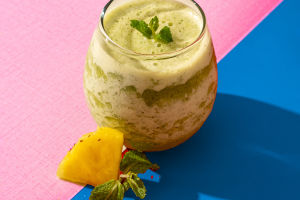Hey Lykkers! Pineapple, with its vibrant yellow flesh, spiky exterior, and sweet-tart flavor, is one of the most beloved tropical fruits in the world.
Not only is it delicious and versatile, but it also packs a nutritional punch. Here’s everything you need to know about this delightful fruit, from its origins and health benefits to culinary uses and fun facts.
The Origins of Pineapple
Pineapple (Ananas comosus) is native to South America, specifically Brazil and Paraguay. It was first cultivated by the indigenous people, who appreciated its unique flavor and nutritional value. The Spanish explorers brought the pineapple back to Europe in the 16th century, where it became a symbol of luxury and hospitality.
By the 18th century, pineapple cultivation spread to other tropical regions, including Hawaii, where it became a significant crop and a staple in the fruit industry.
Nutritional Benefits of Pineapple
Pineapple is not just delicious; it’s also packed with vitamins and minerals. Here are some of the nutritional benefits:
Rich in Vitamins: Pineapples are an excellent source of vitamin C, which boosts the immune system, promotes skin health, and aids in the absorption of iron.
High in Manganese: This essential mineral is important for bone health, metabolism, and antioxidant defenses.
Contains Bromelain: Pineapple contains bromelain, an enzyme known for its anti-inflammatory properties and its ability to aid digestion.
Low in Calories: With about 50 calories per 100 grams, pineapple is a low-calorie snack, making it a healthy choice for those watching their weight.
Culinary Uses of Pineapple
Pineapple’s unique flavor makes it a versatile ingredient in both sweet and savory dishes. Here are some popular ways to use pineapple in cooking:
Fresh and Juicy: Enjoy pineapple fresh, either sliced or cubed, as a refreshing snack or in fruit salads.
Grilled: Grilling pineapple caramelizes its sugars and enhances its flavor, making it a delicious addition to summer barbecues or desserts.
Smoothies: Pineapple adds a tropical twist to smoothies, blending well with other fruits like banana, mango, and spinach.
Sauces and Salsas: Pineapple can be used in savory dishes, such as stir-fries, or as a sweet topping for grilled chicken or fish. Pineapple salsa, made with diced pineapple, onion, and cilantro, is a perfect complement to grilled meats.
Desserts: From pineapple upside-down cake to tarts and sorbets, this fruit adds sweetness and a burst of flavor to a variety of desserts.
Pineapple Varieties
There are several varieties of pineapple, each with its unique flavor and texture:
Queen Pineapple: This variety is smaller, sweeter, and has a softer texture compared to other types.
Red Spanish: Known for its reddish skin and sweet-tart flavor, this variety is popular in tropical regions.
Hawaiian Pineapple: Grown in Hawaii, this variety is known for its sweet and juicy flesh, making it a favorite for fresh consumption.
Golden Pineapple: This variety is prized for its rich sweetness and vibrant golden color, making it ideal for desserts and snacking.
How to Choose and Store Pineapple
Choosing the right pineapple is crucial for getting the best flavor. Here are some tips:
Look for Color: Choose a pineapple that is golden-yellow in color, indicating ripeness. Avoid those that are overly green or have brown spots.
Smell the Base: A ripe pineapple should have a sweet aroma at the base. If it smells sour or fermented, it may be overripe.
Feel the Firmness: Gently squeeze the pineapple. It should be firm but have a slight give, indicating ripeness.
Pineapple is not just a tropical fruit; it’s a versatile ingredient that adds flavor, nutrition, and a touch of sunshine to your meals. Whether you enjoy it fresh, grilled, or in a delicious dessert, pineapple offers a delightful taste of the tropics that is hard to resist.

